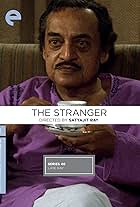An arthouse film in which different stories intertwine in a cinematic labyrinth with minimal sci-fi and uses teleport techniques in narrative. The cruise ship in the seas of Patagonia is used as a hub that connects the three different places in the film, from the forest of Philippines to the Montevideo apartment in a South American city. The door which divides the different worlds brings curse and also luck to the characters who observe each other with uncertainty. This is all that can serve as a plot, but the movie does not depend on that. It is a heterodox narrative mixed with exposure of emotions using mythical and meditative rhythm to accentuate the film. It could even be said that the movie seeks to deepen emotions and fantasy and the translation of this often comes down to small stretches keeping up with the atmosphere and arthouse tone. The film transcends everything and looks more like a fragment of life captured on camera. Above all, it is a cinema of silence, beyond the mythopoetic imagery which in turn represents a form of telepathy even for the viewers using the initial calm before the storm aspect. It is a really sad to see that the first feature film of Alex Piperno, a Uruguayan living in Argentina took 10 years to complete the project which gives a limited hope for original content movies like this one. I love films when they bring together characters like a mosaic of different continents and a recurring theme. Sometimes i thought about Eduardo Williams's feature debut The Human Surge (2016).
Final thoughts, Alex Piperno's debut feature is part arthouse drama, part sci-fi, and part fantasy as though the characters from Pedro Costa's Fontainhas Trilogy wandered into a version of Twin Peaks directed by Apichatpong Weerasethakul or Royston Tan. Quiet, sublime and demanding are perhaps the adjectives that would best describe "Window Boy Would Also Like to Have a Submarine".



















